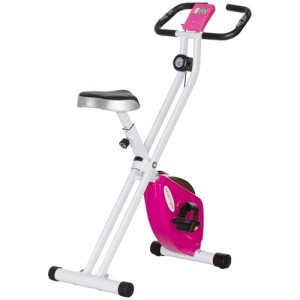Exercise Cycle Home: A Comprehensive Guide to Fitness in the Comfort of Your Space
In the ever-evolving landscape of fitness, the home exercise cycle has actually emerged as a flexible and efficient tool for preserving physical health and mental wellness. As more people look for practical and available ways to stay fit, the exercise cycle has become a popular choice for those who prefer the comfort and personal privacy of their own homes. This post looks into the advantages, types, and pointers for using an exercise cycle in the house, together with some regularly asked concerns to assist you make an informed choice.
The Benefits of Using an Exercise Cycle in the house
Convenience and Accessibility
- Among the most considerable benefits of owning an exercise cycle is the benefit it provides. You can work out anytime, regardless of the weather condition or your schedule. This makes it much easier to preserve a consistent fitness routine without the need to travel to a gym.
Economical
- While the preliminary financial investment in an exercise cycle may seem high, it can be more economical in the long run compared to gym memberships and travel expenses. Furthermore, lots of cycles come with functions that can change the need for several tools.
Low-Impact Exercise
- Cycling is a low-impact activity, making it ideal for individuals of any ages and fitness levels. It is particularly helpful for those with joint pain or injuries, as it offers a gentle method to remain active without putting excessive strain on the body.
Cardiovascular Health
- Regular cycling can enhance cardiovascular health by enhancing the heart and lungs. It helps to lower high blood pressure, minimize the danger of heart illness, and enhance total endurance.
Mental Health Benefits
- Exercise, in basic, is understood to improve mental health by lowering tension, stress and anxiety, and anxiety. Cycling, in specific, can be a meditative and enjoyable activity, supplying a sense of accomplishment and wellness.
Types of Exercise Cycles
Upright Bikes
- Upright bikes are the most typical kind of exercise cycle and carefully resemble standard bicycles. They use a range of resistance levels and are appropriate for a broad variety of exercises, from gentle pedaling to intense interval training.
Recumbent Bikes
- Recumbent bikes feature a reclined seating position and are frequently recommended for individuals with back pain or those who prefer a more unwinded workout. They supply excellent support and are simpler on the joints.
Spin Bikes
- Spin bikes are designed for high-intensity exercises and are often used in spin classes. They feature heavy flywheels and adjustable resistance, allowing for a more dynamic and difficult trip.
Smart Bikes
- Smart bikes are linked to the internet and can stream live or on-demand classes. They often include interactive features, such as virtual routes and performance tracking, making the workout experience more appealing and inspiring.
Tips for Using an Exercise Cycle in your home
Establish Your Space
- Choose a well-ventilated area with sufficient area to walk around the bike. Guarantee the floor is steady and consider using a mat to protect it from sweat and vibrations.
Adjust the Bike
- Appropriately change the seat height and handlebars to make sure a comfortable and ergonomic position. The seat needs to be level, and your legs need to be somewhat bent at the bottom of the pedal stroke.
Heat up and Cool Down
- Constantly start with a 5-10 minute warm-up at a low resistance to prepare your muscles and joints. Likewise, cool off with a gentle trip and stretching to avoid stiffness and soreness.
Stay Hydrated
- Keep a water bottle within reach and beverage regularly throughout your workout to remain hydrated. This is especially essential for longer or more extreme sessions.
Blend Your Workouts
- To avoid boredom and plateaus, differ your exercises by incorporating various resistance levels, intervals, and periods. Consider using apps or online classes to keep your routine fresh and challenging.
Regularly Asked Questions (FAQs)
Q: How frequently should I utilize an exercise cycle?
- A: The frequency of your exercises depends on your fitness goals and schedule. For general health and wellness, go for 3-5 sessions each week, each lasting 20-60 minutes.
Q: Can I lose weight with an exercise cycle?
- A: Yes, cycling can be an effective way to burn calories and reduce weight. Combine it with a balanced diet plan and other kinds of exercise for the very best results.
Q: Are exercise cycles appropriate for all fitness levels?
- A: Yes, exercise cycles can be gotten used to accommodate numerous fitness levels. Newbies can start with low resistance and much shorter periods, while advanced users can increase the strength and period of their exercises.
Q: How do I pick the best exercise cycle?
- A: Consider your fitness objectives, spending plan, and offered space. Upright bikes are flexible and space-efficient, recumbent bikes are more comfortable, and spin bikes are perfect for high-intensity exercises. Smart bikes provide the added benefit of connectivity and interactive features.
Q: How do I keep my exercise cycle?
- A: Regular maintenance is vital to guarantee the durability and efficiency of your bike. Tidy it after each use, lubricate the chain (if applicable), and check for any loose parts or indications of wear and tear.
An exercise cycle is an important addition to any home gym, using a practical, cost-efficient, and versatile way to remain fit. Whether you are a fitness enthusiast or a newbie, there is an exercise cycle that can fulfill your needs and help you achieve your health and wellness objectives. By following relevant resource site and standards outlined in this short article, you can make the many of your home cycling experience and delight in a much healthier, happier life.

